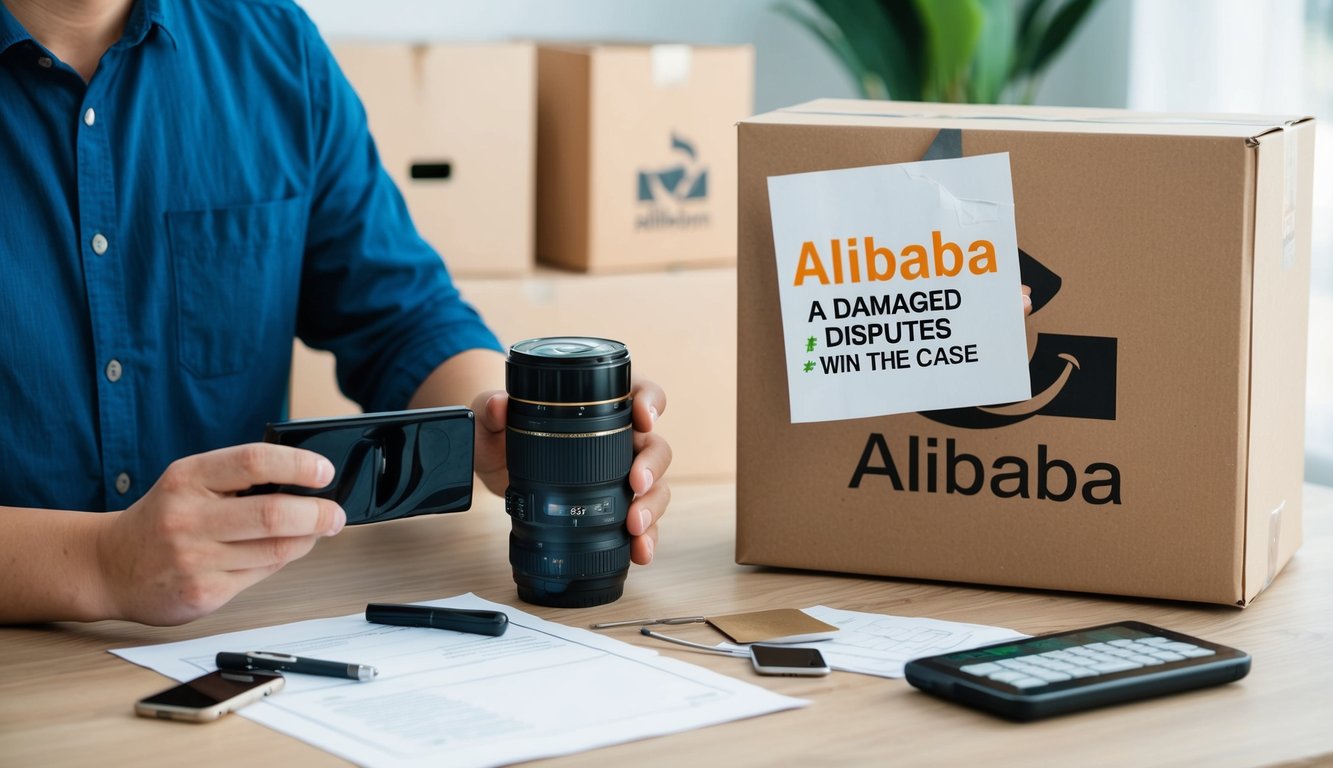No matter how careful you are when selecting suppliers on Alibaba, disputes can still arise. Whether it’s a late shipment, a quality issue, or a misunderstanding about the order details, handling disputes effectively is critical to protecting your business. Alibaba offers several tools and processes to help buyers resolve conflicts with suppliers, but knowing how to approach a dispute will give you the best chance of resolving it quickly and fairly.
In this blog, we’ll guide you through the steps of handling disputes with Alibaba suppliers, from identifying the problem to escalating it if necessary.
1. Identify the Issue Clearly
Before initiating a dispute, it’s essential to understand the root cause of the problem. Common issues buyers face include:
- Product quality not matching the description: If the products delivered don’t match the specifications listed on Alibaba or are of poor quality.
- Late or non-delivery: If the supplier hasn’t delivered the goods by the agreed date or hasn’t shipped them at all.
- Order discrepancies: This includes receiving the wrong quantity, size, color, or model.
- Payment disputes: Issues where payments were made, but the supplier didn’t fulfill their end of the bargain.
Identifying the exact issue will help you communicate more effectively with the supplier and offer a clearer path to resolution.
2. Communicate with the Supplier
Once you’ve identified the problem, your first step should always be to contact the supplier directly. Most disputes can be resolved through open and clear communication, and this should always be your starting point.
- Provide specific details: Be as clear as possible about the issue. Include order numbers, product descriptions, and any supporting evidence like photos, videos, or invoices.
- Stay polite and professional: Avoid getting emotional or aggressive. Maintaining a respectful tone will increase the chances of a smooth resolution.
- Propose a solution: Be proactive by suggesting a resolution, such as a replacement, refund, or discount on future orders.
In many cases, suppliers are willing to work with you to fix the issue, especially if they want to maintain a long-term relationship.
3. Open a Dispute Through Alibaba’s Trade Assurance
If direct communication with the supplier doesn’t lead to a satisfactory resolution, and your purchase is covered by Alibaba’s Trade Assurance, you can escalate the issue by opening a dispute through the platform. Trade Assurance protects buyers by ensuring that they receive the products as agreed, or get their money back.
Here’s how to open a dispute:
- Log into your Alibaba account and go to the “Orders” section.
- Find your order and click on “Open Dispute.”
- Provide detailed evidence: Upload photos, videos, and any communication you’ve had with the supplier regarding the issue.
- Propose a resolution: Specify what you would like, whether it’s a refund, replacement, or partial refund.
Alibaba will review the evidence from both parties and determine the best course of action.
4. Gather Strong Evidence
Strong evidence is key to winning a dispute. Make sure you have:
- Photos or videos of the damaged or incorrect products.
- Screenshots of your conversations with the supplier, including promises made about product quality, delivery times, or specifications.
- Invoices or contracts that outline the agreed-upon terms.
Providing comprehensive evidence helps build a strong case, increasing your chances of a favorable outcome.
5. Negotiate During the Dispute Process
While Alibaba is reviewing the dispute, you still have the option to negotiate directly with the supplier. Often, suppliers are more willing to settle at this stage to avoid potential negative outcomes. You can suggest:
- A partial refund: If the product is usable but not up to your expectations.
- A replacement order: If the supplier agrees to send a new batch of products that meet the original specifications.
- Discounts on future orders: If the issue isn’t significant enough to warrant a full refund or replacement, you could negotiate a discount for future business.
Negotiating during the dispute process shows the supplier that you’re reasonable and willing to compromise, which may lead to a faster resolution.
6. Escalate the Dispute if Necessary
If negotiations fail and the supplier refuses to cooperate, you can escalate the dispute to Alibaba’s Dispute Resolution Team. This step involves Alibaba’s mediation, and they will make the final decision based on the evidence provided by both parties.
To escalate the dispute:
- Submit additional evidence: If you have more information or supporting documents that weren’t included earlier, provide them now.
- Provide clear explanations: Make sure your argument is clear and concise to help the Dispute Resolution Team understand the issue.
Alibaba’s team will review the case and either issue a refund, request that the supplier provides replacements, or take other actions depending on the situation.
7. Prevent Future Disputes
The best way to handle disputes is to avoid them altogether. Here are some tips to prevent disputes with suppliers on Alibaba:
- Vet suppliers thoroughly: Use Alibaba’s verification tools and read customer reviews before selecting a supplier. Only work with suppliers who have positive feedback and a proven track record.
- Communicate expectations clearly: Be specific about your product requirements, including materials, dimensions, quality standards, and shipping timelines.
- Request product samples: Before placing a large order, request samples to ensure the product quality meets your expectations.
- Use Trade Assurance: Always make payments through Alibaba’s Trade Assurance system for added protection.
Conclusion
Disputes with Alibaba suppliers can be frustrating, but with the right approach, they can be resolved fairly. Start by communicating directly with the supplier and offering a solution. If that doesn’t work, use Alibaba’s Trade Assurance system to escalate the dispute. Remember to gather strong evidence and stay professional throughout the process.


